- Home
- William Shakespeare
Julius Caesar Page 16
Julius Caesar Read online
Page 16
Farr: But that translates beautifully into modern ideas of pacifism and activism. Those ideas are timeless. The language in which they are couched might be unfamiliar, but you are not trying to give the audience a lesson in stoic philosophy and the ideas are crystal clear: the notion of patient acceptance of faith against those notions of fighting faith, and self-determination. Cassius is a phenomenally modern character. Brutus is difficult because he is a less modern character, but I look at someone like Barack Obama and think in a funny way Brutus is coming back in: the emphasis on moral center, on rhetoric, has actually returned after a period in which I feel politics was very much about delivery and about making the correct decision under pressure, and not really about ideology and morality. We seem now to be returning to these areas, so that debate is still alive now. I found the debate between Cassius and Brutus to be particularly sensitive: the most alive material that we dealt with.
How did you stage the assassination itself?
Hall: One of the big problems with the play is blood: there’s an awful lot of it and once it gets on the stage, from a practical point of view it gets very sticky. And I wanted a lot of blood. There’s blood on people’s hands, they talk about the blood and how you can smell it; it’s very, very important, especially for what happens afterward. I had Caesar in his chair and there was a very white, perspex sheet that the chair was on that went up the back of the RST and up into the fly floor with a picture of Caesar on it. It was like a beautiful big piece of scenery, but when he was murdered we could chuck blood all over it, because we then dropped it from the fly floor and dragged it off stage and all the blood was gone when we wanted it to be. It was very violent and very bloody and you saw that he ended up being stabbed again and again and again, and everybody had to have a hand in it. It was violent, sodden, and very bloody.
Farr: The murder was brutal and dirty and messy and, very much because of the costumes, the men in suits, and the sense that Caesar was clearly conducting some kind of high-level cabinet meeting, it felt political and it took place in real life. I was looking for a level of ritual as well, when they dip their hands in the blood of Caesar. The blood was not naturalistic because the whole play was not presented in that naturalistic way: there was a bucket of blood brought on and there was a strange ritualistic quality to that which counterpointed the more grubby realism of the actual killing. Because there was so much blood people could dip their hands in, and this emphasized the sacrificial quality of the killing, which was very effective.
Bailey: Our one piece of physical set was the plinth that Caesar ascends just before his assassination. It looked like a slab of marble fit for slaughter. Our idea was that the assassins would appear like wolves from the dark and leap onto the plinth. Caesar fights back with amazing ferocity. Greg Hicks, who acted Caesar, made this moment very believable—being lithe and athletic. The grand historical assassination that the conspirators imagined degenerates into frantic butchery. Brutus waits for an opportunity to kill him in a memorable and meaningful way, but finally scrabbles up the steps, pushing the manic killers aside, and grabs the body from them. The moment is not heroic, just ghastly.
How, with a limited number of actors, did you go about creating the mob scenes?
Hall: We put the actors all over the theater. I personally can’t imagine that scene being done any other way than using your audience as the crowd, and I am sure that’s what would have happened when Shakespeare did it; several hundred people hopefully (unless it’s a Tuesday matinee!), and you get them for free. So we had actors out in the audience at different points shouting and jeering. The audience weren’t invited to join in—because why would they?—but they certainly enabled the rebels and Antony to directly address the audience with the corpse of Caesar, and talk to those various different actors dotted around the building. They were positioned up in the gallery and would shout down at the stage. They had iron bars, which they banged on bits of the auditorium—I think we damaged the poor old RST at some point—and then we had one of the crowd come in on a rope and abseil down from the balcony into the stalls as the mob made their way onto stage. It was a scene that we played directly out to the audience.
Farr: We started the play with every single actor charging onto the stage and setting the play up, bringing lights, video, etc., and then at the end of that sequence they were all able to leap onto the walls of this factory structure. With the exception of the two Tribunes, every single person, including the actors who played Brutus, Cassius, Antony, and Caesar, were the crowd. In a sense it was a Brechtian technique: you play those twenty people and there was no illusion of any kind that it was real. I can’t stand it when theater tries to pretend that nine people are a hundred in a naturalistic sense. There was a clear filmic way in which that scene was created, and if theater accepts the artifice then the audience are willing to understand. It’s about highlighting and accepting the artifice.
Bailey: Julius Caesar is a great ensemble piece as the plebs have such an important role. The first half of the play is predominantly a discussion between the people that rule and the people that are ruled, and it’s how you represent the people that are ruled that’s most tricky. I worked very closely with my choreographer and fight director to create a stage and film language for these crowds, mobs, and armies. A huge part of our work with the ensemble has concentrated on creating an expressionistic gestural world to capture the panic and hysteria that is unleashed in the play.
We filmed our cast and kept multiplying them, so that our group of actors could become a huge crowd. I think the template for the filming was based on two ideas provided by Bill [Dudley—designer]. The Elgin Marbles and Trajan’s Column, which depicts scenes commemorating the Emperor Trajan’s victories, fascinated him. It’s very sophisticated in the way it captures complex scenes with only a couple of centimeters of relief—it is like the very first graphic novel, or newsreel. This two-dimensional language became the main inspiration for the filming technique, alongside the work of the photographer Eadweard Muybridge. He took a series of pictures that analyzed the human body, how the muscles and limbs behaved, capturing every stage of the process. What we liked, which wouldn’t necessarily have occurred to Muybridge, was the heroic aspect of it. The men and women he captured repeating everyday actions became epic and strangely moving. I went to see the Elgin Marbles at the British Museum with Fotini Dimou, my costume designer. The depictions of these warriors, caught in violent images of killing and dying, also informed our approach to the armies and battles that are such a huge and difficult part of the play. We were really impressed by the athleticism of these Elgin warriors: semi-naked, very vulnerable, but powerful expressions of the sheer beauty of the human body.
And how did you tackle the “big speeches,” such as Mark Antony’s oration? It must be tough to make words that are so familiar seem new.
Hall: I think that is one of the traps with Shakespeare; you think that everyone knows bits really well. You just have to leave that outside the door. Those famous speeches have become famous in themselves, but people forget what’s before and what’s after, and largely, if you get the play right, you just arrive at those moments. Tom Mannion is such an extraordinary wordsman, he was so calm and charismatic and clear, he played out the action of trying to persuade the audience to tell him what they thought so well, that I think we just approached it as you would any other scene. The action in that speech for the actor playing Antony is to try and get to a point where the crowd do what you want them to do. You can’t do that by telling them; you can only do that by reasoning with them. I think it would have been an extremely popular and interesting scene for the audience of the day to watch, because I think the groundlings would have liked to think of themselves as being politically active. In Richard III there is a whole scene with the crowd and the Mayor of London where the citizens of London are needed by Richard to pull off his coup. He illustrates the power of the people again in Henry VI in Cade’s revolt.
In Caesa
r Shakespeare writes a scene where Antony harnesses the energy of the mob and shows how manipulative a good politician can be, to the point where they murder somebody because they get his name wrong, rather like that pediatrician who was attacked some years ago because everyone thought he was a pedophile. I think it would have been very interesting for the groundlings to have watched that scene.
Farr: That’s a good question. Sometimes with the more well-known set pieces there is a sort of pressure to shed new light on them. But I had a particular interest in media emphasis, the way in which transmission of information is manipulated, which is clearly what Antony is doing. So in our production Antony is filmed as he gives the speech and the image of him giving the speech is then projected behind him onto the screen, so you get a double image of him on screen and live. But also, rather bizarrely and because of a curious piece of chance, the camera is actually filming him but also happens to light upon the screen upon which his image is being projected. So you create what is called an infinite image of the man’s face, because the camera is filming a projection of its own image. You create about a hundred Antonys receding into the distance, and that created an extraordinary, completely accidental quality which we found in rehearsal when we were playing with the video cameras. That resonated in a way that was very powerful and as soon as that happened I knew that that would visually be the centerpiece of the speech, and then it was for the actor to explore the strange mixture of honesty and dishonesty that’s in that speech.
7. Mark Antony played by Gary Oliver in David Farr’s 2004 production at the RSC’s Swan Theatre. Using film techniques, Antony’s face was repeated on stage, and on screen “[y]ou create about a hundred Antonys receding into the distance, and that created an extraordinary, completely accidental quality.”
Is the scene with Caesar’s Ghost particularly problematic?
Hall: No. I think ghosts in Shakespeare are never problematic, they always have an action and a reason: ghosts visiting the living, they are a portent of what is going to happen. I think as long as you don’t try and make them spooky you are okay. The tent scene is such a beautiful scene. The boy sings to Brutus and it’s calm and then slowly the atmosphere changes and suddenly the Ghost of Caesar appears and warns Brutus about Philippi. Ian Hogg just walked on stage—we put body makeup on him, and Ben Ormerod lit it beautifully—and it becomes an expression of the inner fear and turmoil of the person who sees the Ghost.
Farr: No, because we demystified it completely. He literally just walked on and sat next to him in the tent: un-supernatural, real and strangely effective. It shone better than big shards of light and music would have done, but that is just the way we did it in our production, that suited our style. Our style was basically an honest style all the way through the piece and the honesty of that suited our production.
Bailey: Elizabethans believed that ghosts were not wispy things that float, but concrete—literally the corpse would come out of its grave. Greg Hicks, who played Caesar, was interested in pursuing something more demonic, but we came back to this more simple approach. In addition we had Caesar’s widow, Calpurnia, dressed in black with a black veil over her face, lead his bleeding corpse into Brutus’ tent. I wanted to remind the audience of this woman who otherwise has disappeared from the play, placing her personal grief as another consequence of their crime. By bringing her on stage it suggested that her rage and lament at losing her man is telepathically in sync with Brutus’ guilt and grief.
Is the transition from the political first half of the play to the military second half difficult to achieve?
Hall: I didn’t have an interval. My production was probably quite different to other productions; it was two hours fifteen minutes straight through, so as Rome burned the mob turned into marching soldiers while music hammered out and they sang and then at the end of that sequence there was Cassius standing in front of his army. It was continuous. In the latter part of the play I binned all those ludicrous people who Shakespeare gets to run on obsessively and commit suicide, who you’ve never met before and who you don’t care about. I think some of them were a result of Shakespeare being seduced by the excesses of Plutarch … It was a straight-through show with no interval so I didn’t even notice the join at all.
Farr: That is why the modern setting works so well. We emphasized it. The first half took place in a strongly inner-city civilian environment, men in suits, coffee cups; we revealed the language of modernity, often in an ordinary way. And then suddenly of course to transfer that across into a war erupting is something that we all know happens. Rome at that time was not exactly a fledgling state, but it had a vulnerability about it, it was still discovering what it was, so we used as a source a nation state which was relatively young; we explored Ukraine and Georgia and states where there was a fragility inherent within the nation. That was useful, but I would say that is still true of America now, and true of much of the world still: there is an inherent uncertainty about what the nation is and what it should stand for.
Bailey: When I first read the play it was very clear how tricky the second half could be, as from big solid scenes the play becomes a series of fragmented skirmishes. My first thought was to perform the play without an interval simply to keep up the furious pace and horrifying escalation of violence. I also remember telling myself that the key to the play would be to give as much weight and time to the military scenes and not to rush them, or cut them. The technique of duplicating the stage action with the projected images really helped to flesh out the imagination of these scenes. Our soundscape was as huge, repetitive, and unrelenting as the gesture world on stage.
One of the important strands of research was the story of Romulus and Remus founding Rome. As the story goes, these twins, who according to legend were raised by a she-wolf, fought each other to the death over a piece of land. For me this became the key to this piece: Rome was founded in bloodshed. This one act is followed by an endless saga of slaughter in the name of Rome: from the twins fighting it out on a lonely hillside to the vast field of blood that is the Empire. So in my staging as a prologue to the show, Romulus kills Remus and the first blood is spilt. We repeated the manner of this savage and primal killing in the battle scenes where the soldiers, having begun in formation, disintegrate into bestial violence.
What did you make of the roles of the wives (and more locally of the odd detail of the double reporting of Portia’s suicide)?
Hall: Both the women in the play know exactly what is going on with their men. Calpurnia dreams about what is going to happen to Caesar and tells him not to go to the Senate. It is a wonderful chapter of this story: you have got a man who knows he is going to be murdered but that is not going to stop him going to the Senate because he is Caesar, and who are they to stand up against him? If he didn’t go, he wouldn’t be Caesar. He does talk about himself in the third person a lot, and so Calpurnia helps you understand the personal versus the public. I think Portia’s scene also does a few things: it underlines what a mess Brutus is in. There is this extraordinary moment where she stabs herself in the thigh. Of course, that is quite a Catholic piece of iconography: Christ’s wound in the side upon the cross, bleeding and dripping into the cup that became the Holy Grail. So it’s a very powerful image to the audience of the day; today I think it tells you that this woman is falling apart, she is so frustrated and she feels her husband’s pain so intensely. She wants to prove to her husband that she can bear the pain of whatever it is that he is not telling her. Those two relationships give you a little more personal, domestic insight into the hearts and minds of the two major protagonists of the play, Brutus and Caesar, and I think without the women the play would be a much drier experience to watch.
Farr: I found that difficult because it is something that has changed with time. We looked at Eastern Europe, which is still an unbelievably male world, and that was helpful. Putin’s wife is a perfect example of someone who never ever comes out into the limelight and is constantly behind closed doors. The r
eason why I found it difficult is that actresses just do not get as good a role as actors. For a while I explored having female conspirators, but then of course one of the difficulties is that there is talk of women and men in the play, so if Portia is to say what she says about a woman and then there is a female conspirator it doesn’t make sense. So in the end the only other women I allowed myself were aides, political aides, messengers. I used women a lot for that, that was quite enjoyable, but we basically created a glass ceiling within a society and they weren’t allowed above a certain level. Out of a genuine desire to give female actors great roles you can unfortunately contravene basic principles of the play, whether it be Lear with his three daughters, where you can’t have women charging around the play in other roles. You’d have to completely subvert it, which would be very exciting at some point. To have a completely female leader … there is clearly a scope for that somewhere.

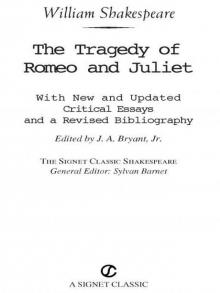 Romeo and Juliet
Romeo and Juliet As You Like It (Folger Shakespeare Library)
As You Like It (Folger Shakespeare Library)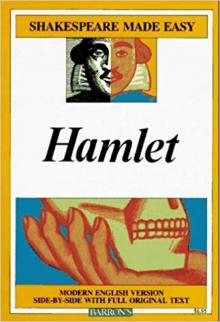 Hamlet
Hamlet Richard II (Folger Shakespeare Library)
Richard II (Folger Shakespeare Library)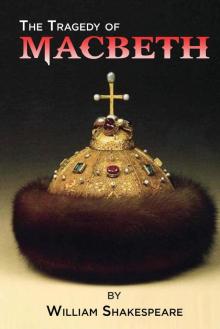 Macbeth
Macbeth Henry V
Henry V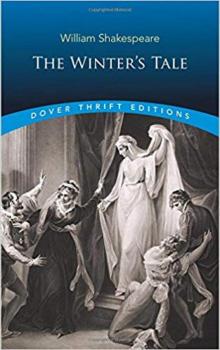 The Winter's Tale
The Winter's Tale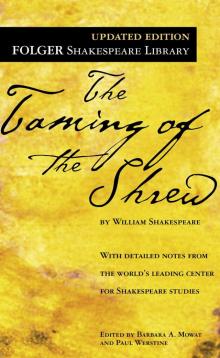 The Taming of the Shrew
The Taming of the Shrew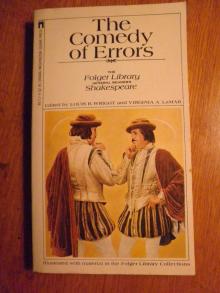 The Comedy of Errors
The Comedy of Errors King Lear (Folger Shakespeare Library)
King Lear (Folger Shakespeare Library)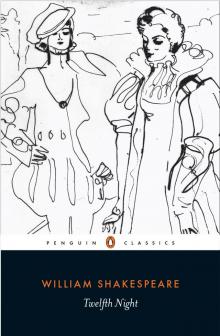 Twelfth Night
Twelfth Night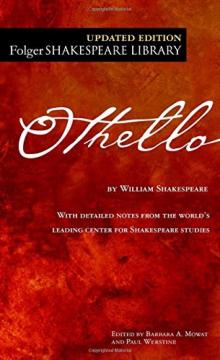 Othello
Othello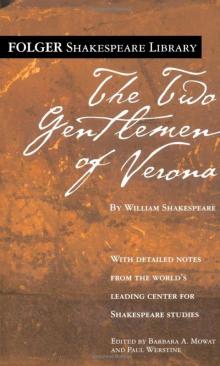 The Two Gentlemen of Verona
The Two Gentlemen of Verona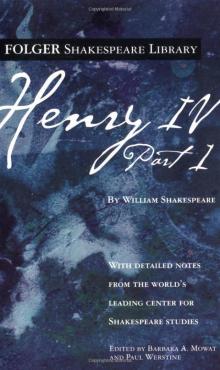 Henry IV, Part 1 (Folger Shakespeare Library)
Henry IV, Part 1 (Folger Shakespeare Library) King John/Henry VIII (Signet Classics)
King John/Henry VIII (Signet Classics)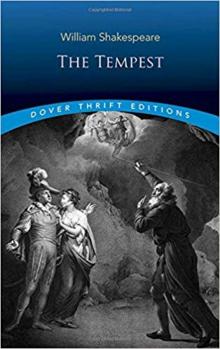 The Tempest
The Tempest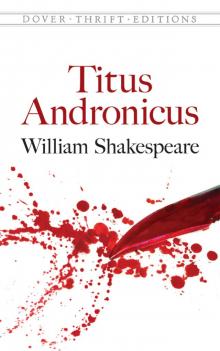 Titus Andronicus (Dover Publications)
Titus Andronicus (Dover Publications)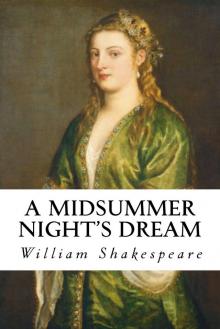 A Midsummer Night's Dream
A Midsummer Night's Dream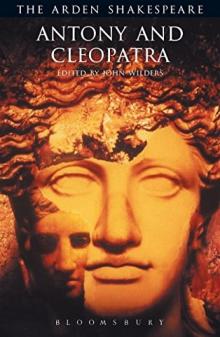 Antony and Cleopatra (Arden Shakespeare: Third Series)
Antony and Cleopatra (Arden Shakespeare: Third Series)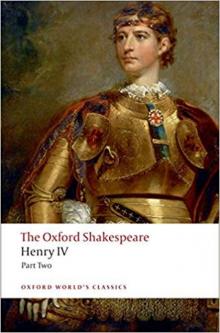 The Oxford Shakespeare: Henry IV, Part 2 (Oxford World's Classics)
The Oxford Shakespeare: Henry IV, Part 2 (Oxford World's Classics)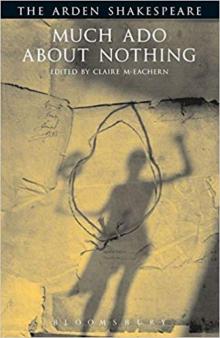 Much Ado About Nothing (Arden Shakespeare: Third Series)
Much Ado About Nothing (Arden Shakespeare: Third Series)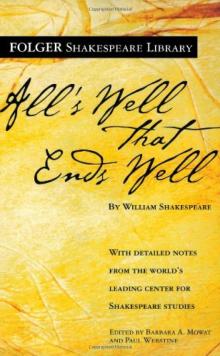 All's Well That Ends Well
All's Well That Ends Well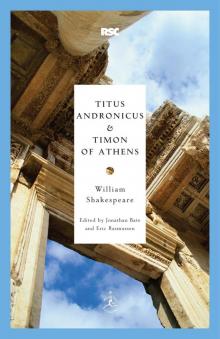 Titus Andronicus & Timon of Athens
Titus Andronicus & Timon of Athens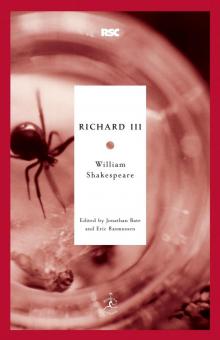 Richard III (Modern Library Classics)
Richard III (Modern Library Classics) Coriolanus
Coriolanus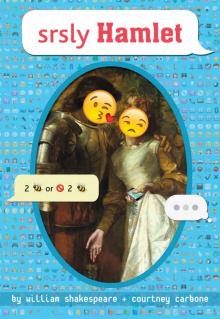 srsly Hamlet (OMG Shakespeare)
srsly Hamlet (OMG Shakespeare) The Merchant of Venice
The Merchant of Venice Richard III
Richard III Richard II
Richard II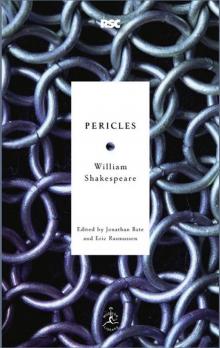 Pericles
Pericles As You Like It
As You Like It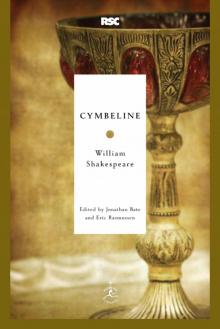 Cymbeline
Cymbeline Alls Wel that ends Well
Alls Wel that ends Well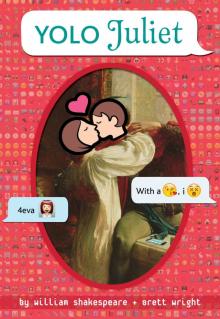 YOLO Juliet
YOLO Juliet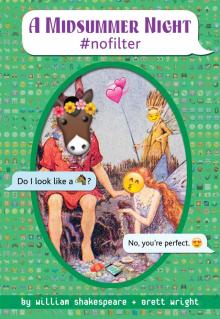 A Midsummer Night #nofilter
A Midsummer Night #nofilter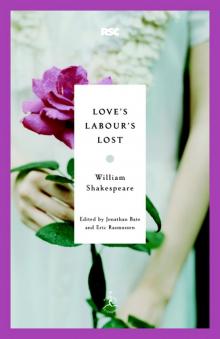 Love's Labour's Lost
Love's Labour's Lost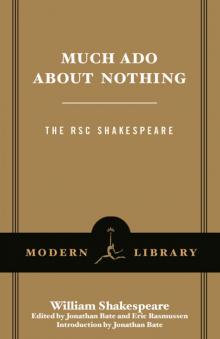 Much Ado About Nothing
Much Ado About Nothing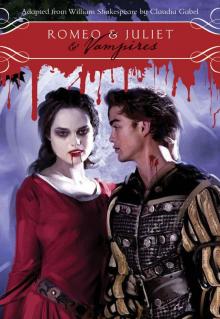 Romeo & Juliet & Vampires
Romeo & Juliet & Vampires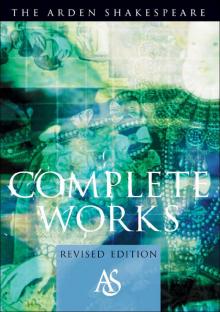 The Arden Shakespeare Complete Works
The Arden Shakespeare Complete Works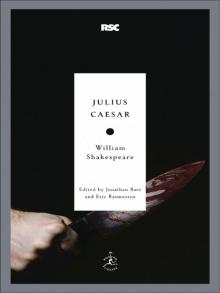 Julius Caesar
Julius Caesar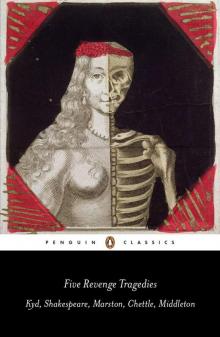 Five Revenge Tragedies: The Spanish Tragedy, Hamlet, Antonio's Revenge, The Tragedy of Hoffman, The Revenger's Tragedy (Penguin Classics)
Five Revenge Tragedies: The Spanish Tragedy, Hamlet, Antonio's Revenge, The Tragedy of Hoffman, The Revenger's Tragedy (Penguin Classics)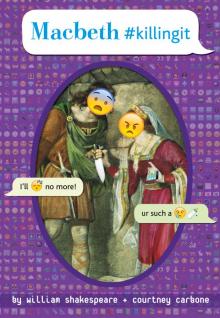 Macbeth #killingit
Macbeth #killingit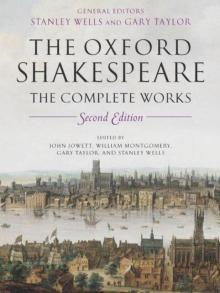 The Oxford Shakespeare: The Complete Works
The Oxford Shakespeare: The Complete Works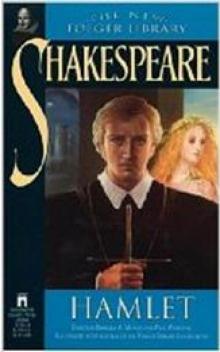 Hamlet, Prince of Denmark (Collins edition)
Hamlet, Prince of Denmark (Collins edition)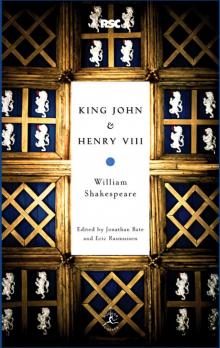 King John & Henry VIII
King John & Henry VIII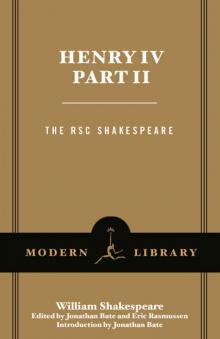 Henry IV, Part 2
Henry IV, Part 2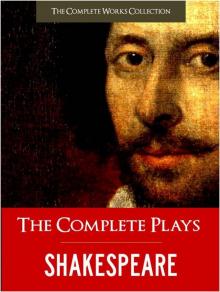 Complete Plays, The
Complete Plays, The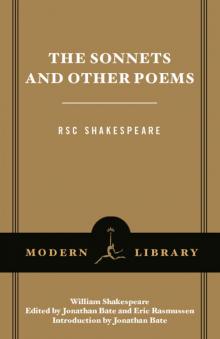 The Sonnets and Other Poems
The Sonnets and Other Poems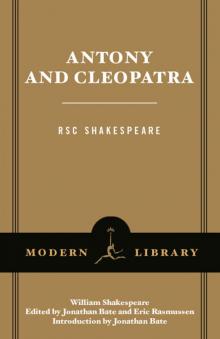 Antony and Cleopatra
Antony and Cleopatra Henry IV, Part 1
Henry IV, Part 1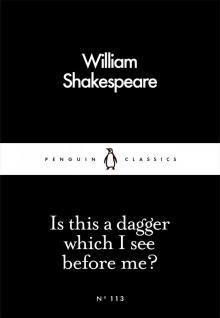 Is This a Dagger Which I See Before Me?
Is This a Dagger Which I See Before Me? The Complete Works of William Shakespeare In Plain and Simple English (Translated)
The Complete Works of William Shakespeare In Plain and Simple English (Translated)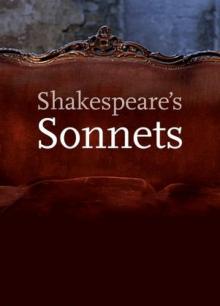 The Sonnets
The Sonnets